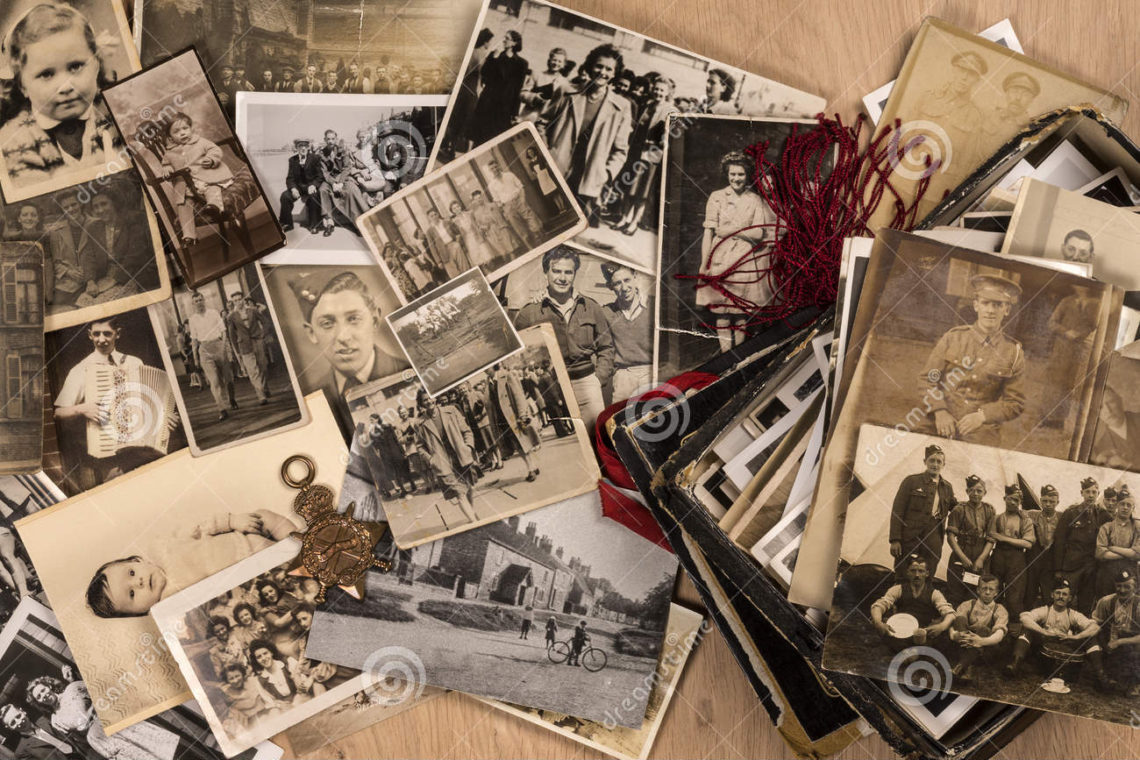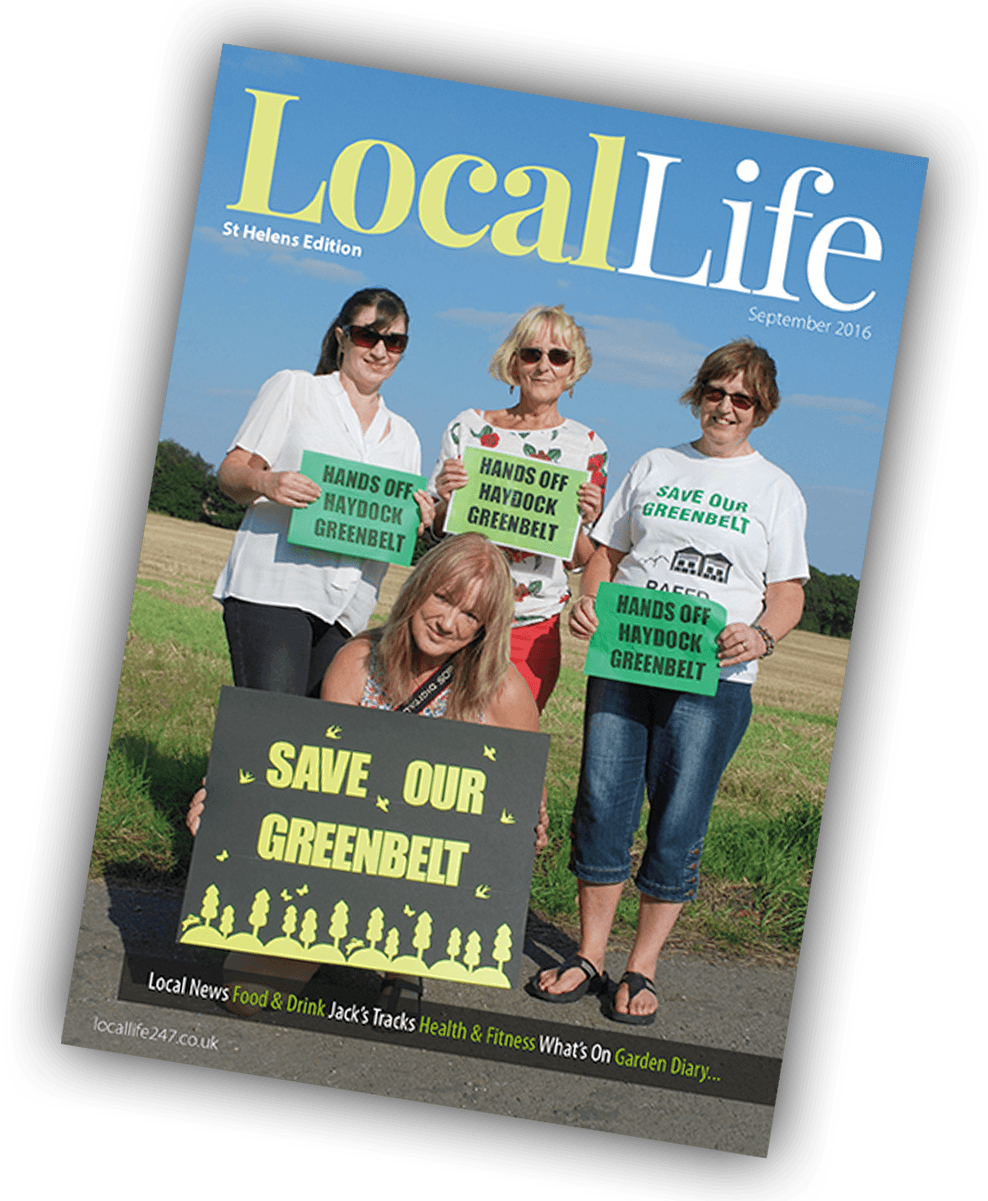
Tracing your ancestors through a family tree is a great way to learn more about the generations before you, and to discover more about yourself in the process. Though it requires dedication and a bit of hard graft, researching the people who came before you can be an incredibly gratifying process. And once you know how to get started, it can be a lot of fun too.
When Local Life’s very own Design Manager, Peter Bretherton, delved into his family tree, he found a legacy which culminated in a stay at Rainhill Hospital for one of his ancestors – you really never know quite what you’ll find.
Peter didn’t know his grandparents. He decided he wanted to know more about them – and the rest of his family – when other relatives began their own family history research, and became determined to uncover more about his ancestors.
The earliest Brethertons Peter traced back lived in Ulnes Walton in Chorley. John Bretherton was born in 1793 and baptised in Leyland; in the 1851 census John was found to be a farmer of 61 acres at Runshaw Moor, two miles east of Croston. Two generations later, however, is where things began to show a tragic side to the Bretherton family tree, beginning with John Bretherton’s grandson James.
Through relatives’ accounts, census records and physical documents – which are a great resource for finding concrete information such as birthplaces, home addresses and maiden names – Peter delved deeper into his family tree.
James Bretherton was born in 1857 in Euxton, Chorley, one of seven children. In his childhood, James became friendly with Ann Robinson whose father ran the Plough Inn – which is still in business today – just across the road from Runshaw Farm where James lived. The couple eventually married in 1879 at Euxton Chapel and moved to Chorley Lane – now Chorley Road in Standish – to begin a family, raising six children together: John, James, Elizabeth, Thomas, William and Alice.
Tragedy was lurking just around the corner. Ann Robinson died in 1896 aged just 39 years old, and James remarried another Ann – Ann Churchouse from Aspull – just a few months later. The couple had one child together before Ann too died of pneumonia in 1902, and one week later James’ second eldest son died of the same disease at just 19 years old. However, it wasn’t until 1906 that young Alice suffered a horrific accident which left her disfigured and which traumatised her father for life.
‘..the last straw’
Alice was thirteen and helping out at the local vicar’s home where his wife was in labour. ‘The midwife sent Alice downstairs to bring something from the mantelpiece,’ Peter explains.
‘Unfortunately she was wearing an apron that caught fire as she reached up to grasp it. She ran upstairs for help but the midwife ordered her out of the room, so Alice ran outside the house, where no doubt her clothes burned all the more readily.’
Alice spent the next twelve months in hospital, not expected to survive. She managed to defy the odds, but her father James was never the same again. ‘It must have been the last straw,’ Peter theorises, ‘having lost his first wife in 1896, his second wife and nineteen year old son in 1902 and then some four years later, his daughter maimed and disfigured for life.’
James’ eldest daughter Lizzy was awakened one night to suspicious noises below her bedroom, and crept downstairs to discover her father preparing to set fire to their home. On another occasion, she found him out in the garden with a loaded gun; Lizzy wrestled the weapon from him and attempted to destroy it with an axe. The gun went off, but thankfully nobody was injured. James was eventually admitted to Rainhill Hospital where he died in 1911.
Meanwhile, Alice went to live with a wealthy uncle near Southport, who left her a small legacy. When Lizzy’s husband Francis went off to war, the then 24 year old Alice moved in with her sister in Haigh, taking a job at the local Post Office. Francis never returned home from war, and Lizzy died in 1928, leaving Alice to care for her children.
Alice passed away in March 1976 in the hospital where she had endured countless operations to treat the burns she suffered some seventy years prior.
Through a combination of sources, Peter was able to trace all the way from 1793 to the present day.
‘..discovering relatives we
didn’t even know about’
It’s important to double check sources, especially from other published family trees, warns Karen Unsworth, a St. Helens resident who got involved in her own family history research after being inspired by findmypast.com. There can be inaccuracies, which is why it’s also important to check your own information is correct before making it public.
It’s a good idea to file the information away privately to double-check later to avoid misleading anyone who uses your family tree as a way into their own.
Karen discovered embroidered postcards sent by her great grandfather, who fought in the Great War in France. Henry Roughsedge was born in St. Helens in 1893, and enlisted in the South Lancs Regiment before he became a sergeant in the Machine Gun Corps. Her family’s military heritage led Karen to visit Étaples Military Cemetery in Boulogne after discovering that her husband Ian’s great uncle Samuel Hope was also killed in the First World War, and part of the same regiment as her great grandfather.
Because the Machine Gun Corps was disbanded in 1922, the only records available for viewing are medal cards and grave records. Karen’s great-grandfather’s records were lost.
Karen currently has a whopping 1420 people on her family tree, and 1060 on her husband’s.
Joining a family history research society can also help you along your journey into the past. Not only will you gain access to new resources and a veritable font of knowledge from experienced researchers, but you’ll meet new people who are also interested in learning more about their family trees – and who knows, maybe a distant relative!
In St. Helens, the St. Helens Townships Family History Society hosts regular meetings at Lucem House Community Cinema on Corporation Street, which take places at 7pm on the third Thursday of the month. Regular help desks are also available to get you started on your family history research journey; these take place at Eccleston Community Library on Tuesdays at 3:45pm. Please check with the library to ensure that workshops are going ahead. Further information can be found at www.sthelenstownshipsfhs.org.uk
Interested in researching your own family tree?
Read our top tips to get started.
– The first step in beginning your family history search is to gather as much information as you can. Whether this is vague facts from your own recollections or first-hand accounts from close family members, write it all down.
– It’s a good idea to start an organisation system – labelled folders, physical or electronic, are great for locating information quickly, while photo albums organised by theme or date can link you to specific periods in your family history. Find a method that works best for you, but remember to collect any and all information you find – however insignificant it first appears.
– Physical documents tend to be the key to uncovering more about your ancestors – and you never know what might be lurking in the loft or at a relative’s house. Archives also hold census records or military service documents which can be incredibly useful when conducting in-depth research – head over to www.gov.co.uk/get-copy-military-service-records for more information.
– Local sources are perfect if you know where your ancestors originated. St Helens Local History and Archives Library hold a vast array of documents and a wealth of information to kick-start your research. Based out of Gamble Building in Victoria Square (WA10 1DY), you can contact the archives by calling 01744 676 952. For records in the Liverpool area, visit https://liverpool.gov.uk/libraries/archives-family-history
– Local museums like the World of Glass can also be a great method of getting inspired if you hit a block. They’ll usually go into detail about local industry, and might even mention a few surprising surnames…
– Another great local resource is the Lancashire BMD Project. This website compiles birth, death and marriage records from across the county in an accessible search tool, with accounts dating back to 1837 – the year civil registration started.
– Lancashire Parish Clerks provides baptism, marriage and burial records compiled from a huge variety of sources including parish registers, churchwardens accounts, land tax records and business directories.
– Never underestimate the microfiche. Usually squirrelled away at the back of a musty library room, microfiche readers allow users to search through local historical newspapers, which can be a key tool in finding specific events or incidents. Although this can be a laborious process, microfilm records are labelled by date, so it works best if you have a starting point in mind.
– If browsing the archives for census records and trawling through microfilm seems like a daunting process, don’t be put off just yet – there are a lot of useful websites that can help you get started. Sites such as Ancestry.com charge you a membership fee but boast huge record collections and a family tree tool. Start by adding some family members to the electronic tree, and find new leads through the site’s suggestions. Meanwhile, free sites such as Find A Grave and Billion Graves help locate tombstones across the world, while allowing you to add personal history information to each grave. It’s worth looking around at various genealogy websites to find which is most suited to your research.
– Another useful website is the National Library of Scotland (www.nls.uk/digital-resources), where you can search by area for historical maps. It’s great for envisioning where ancestors would have roamed and for finding old addresses for areas that have undergone name changes or where new roads have been built.


